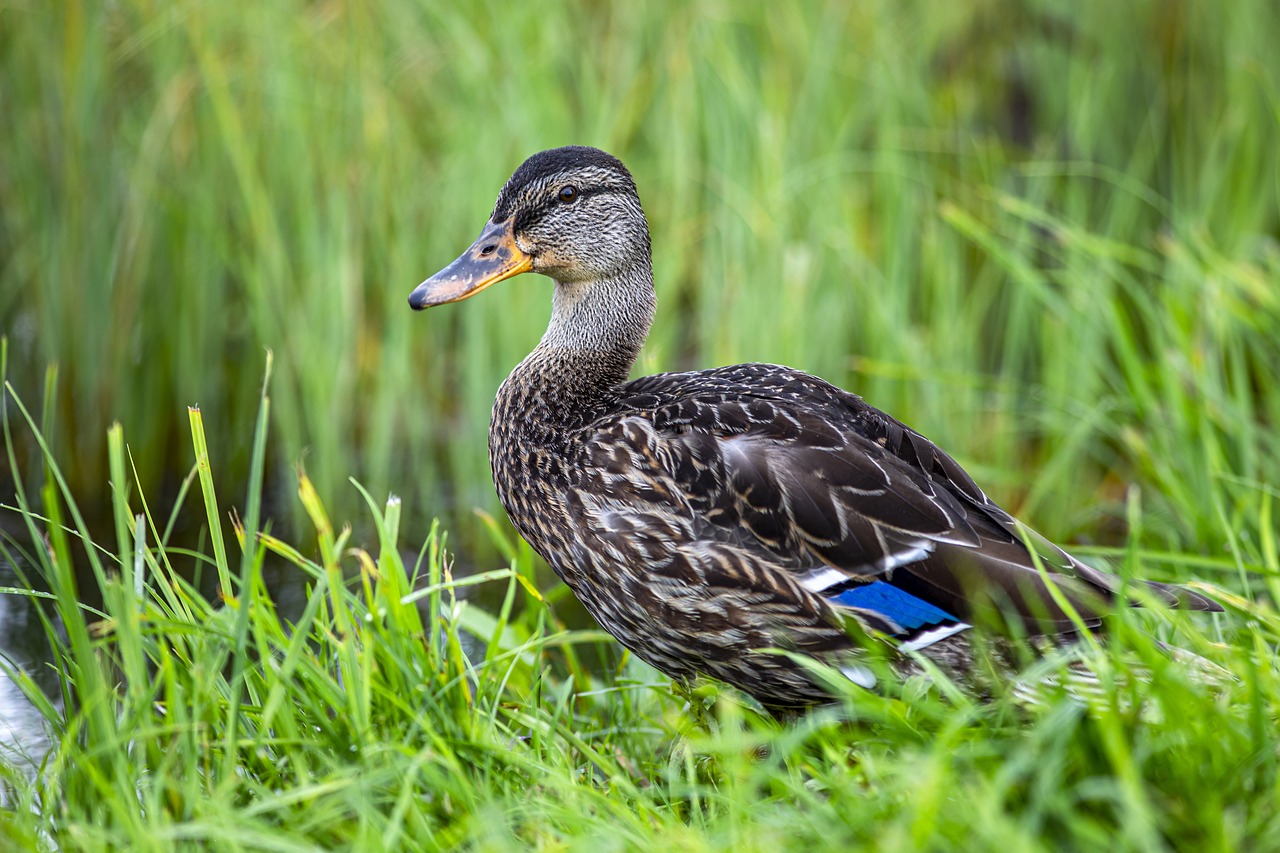The Mallard (Anas platyrhynchos), also known as the Wild Duck, is one of the most familiar and widely recognized waterfowl species in the world. Here’s an overview of this iconic bird:
Description
- Appearance:
- Males (Drakes): Males are known for their striking appearance, featuring an iridescent green head, bright yellow bill, and a chestnut-brown breast. Their body is a mix of gray and brown, and their wings are edged with white.
- Females: Females are more cryptic in color, with mottled brown plumage that provides camouflage. They have an orange bill with darker spots and are generally less colorful compared to males.
- Juveniles: Ducklings are covered in fluffy yellow or brown down feathers and resemble the females in coloration.
- Size:
- Length: About 50-65 centimeters (20-25 inches) from bill to tail.
- Wingspan: Approximately 81-98 centimeters (32-39 inches).
Habitat
- Distribution: Mallards are found throughout the Northern Hemisphere, including North America, Europe, Asia, and parts of North Africa. They are highly adaptable and can thrive in a variety of wetland environments.
- Preferred Environment: They inhabit ponds, lakes, rivers, marshes, and coastal areas. They are also common in urban parks and other artificial water bodies.
Behavior and Ecology
- Diet:
- Omnivorous: Mallards eat a diverse diet including aquatic plants, seeds, insects, small fish, and algae. They are known to dabble on the water’s surface, tipping forward to reach underwater vegetation.
- Breeding:
- Nesting: Female mallards typically build nests near water, using grasses, reeds, and down feathers. They often lay 8-13 eggs.
- Incubation: The female incubates the eggs for about 27-30 days. After hatching, the ducklings are precocial, meaning they are born with their eyes open and are able to walk and swim shortly after birth.
- Migration:
- Movement: Mallards are generally migratory in colder regions, moving to warmer areas during winter. In milder climates, some populations are resident year-round.
Conservation
- Status: Mallards are not considered endangered. They are abundant and widespread due to their adaptability to different habitats and their ability to thrive in human-altered environments.
- Conservation Efforts: Efforts focus on maintaining healthy wetland habitats and managing waterfowl populations. In urban areas, providing clean water and avoiding pollution helps support their populations.
Observing Mallards
- Best Times: They can be observed year-round, with peak activity in the spring and summer during the breeding season.
- Watching Tips: Mallards are often seen in parks and lakes, where they may be feeding or resting. They are relatively tame and approachable in areas with regular human activity.
Interesting Facts
- Vocalization: The quacking sound of the female mallard is one of the most recognizable bird calls. Males also make a softer, less distinctive sound.
- Adaptability: Mallards are known for their ability to adapt to a wide range of habitats, including urban areas, where they have become quite accustomed to human presence.
- Hybridization: Mallards readily hybridize with other duck species, leading to a variety of hybrid forms in the wild.
Summary
The Mallard (Anas platyrhynchos), or Wild Duck, is a versatile and familiar waterfowl known for its vibrant plumage and widespread presence. Its adaptability to diverse habitats, including urban areas, has made it one of the most recognizable and well-studied duck species in the world. Observing Mallards provides insights into their behaviors and their role in various ecosystems.
Visited 846 times, 4 visit(s) today
Views: 1468
Subscribe to the newsletter:
